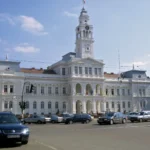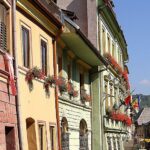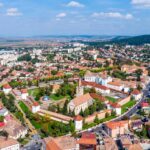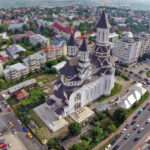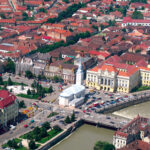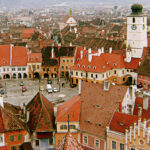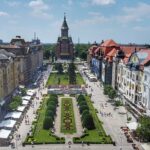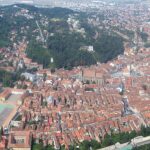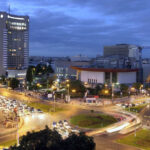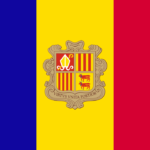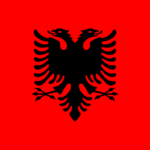Romania
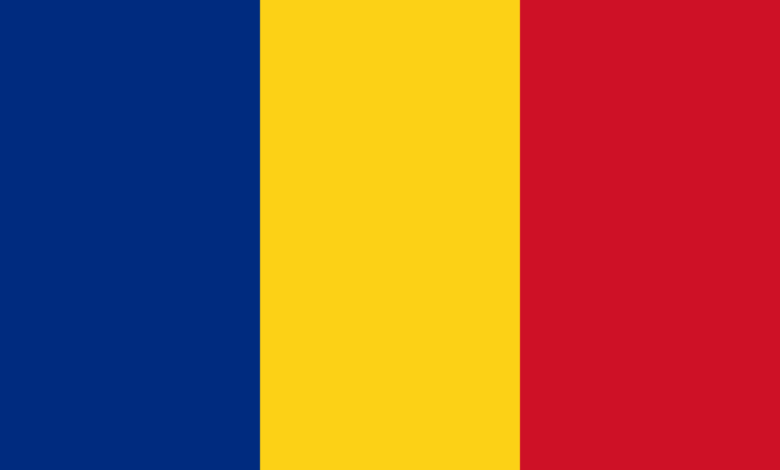
Romania is a country in southeastern Europe, known for the forested region of Transylvania, ringed by the Carpathian Mountains. It borders Ukraine to the north and east, Hungary to the west, Serbia to the southwest, Bulgaria to the south, Moldova to the east, and the Black Sea to the southeast.
This country has a long and rich history, dating back to the days of the Roman Empire. The country was ruled by various empires and kingdoms over the centuries, including the Ottoman Empire, the Austro-Hungarian Empire, and the Soviet Union. Romania gained its independence in 1877 and became a republic in 1947.
Today, Romania is a member of the European Union and NATO. It is a developing country with a growing economy. The country is known for its natural beauty, its rich culture, and its friendly people.
1. Introduction
Welcome to Romania, a dynamic country that captivates visitors with its rich history, vibrant culture, and breathtaking landscapes. Situated in Southeastern Europe, Romania offers a diverse range of travel experiences, from exploring medieval towns and castles to immersing in authentic rural life. With its dramatic mountain scenery, pristine forests, and a coastline along the Black Sea, Romania is a hidden gem waiting to be discovered.
2. Romania: A Land of Cultural Diversity
2.1 Ethnic and Linguistic Composition
Romania is a country that prides itself on its ethnic and linguistic diversity. The majority of the population identifies as Romanian, making up around 89.3% of the total population. Other significant ethnic groups include Hungarians (6%), Romani (3.4%), Ukrainians (0.3%), and Germans (0.1%). The Romanian language is the official language, spoken by 91.6% of the population, followed by Hungarian (6.3%) and Romani (1.2%).
2.2 Rich Cultural Heritage
Romania’s cultural heritage is a tapestry woven with influences from various civilizations that have shaped its history. The country’s vivid imagination and intense spirituality are expressed through its architecture, music, crafts, and traditions. From the iconic Painted Monasteries of Bucovina to the hilltop citadel of Sighisoara, Romania offers a glimpse into its medieval past. The Romanians take pride in preserving their cultural traditions, which are celebrated through vibrant festivals and events throughout the year.
3. Romania’s Geographical Features
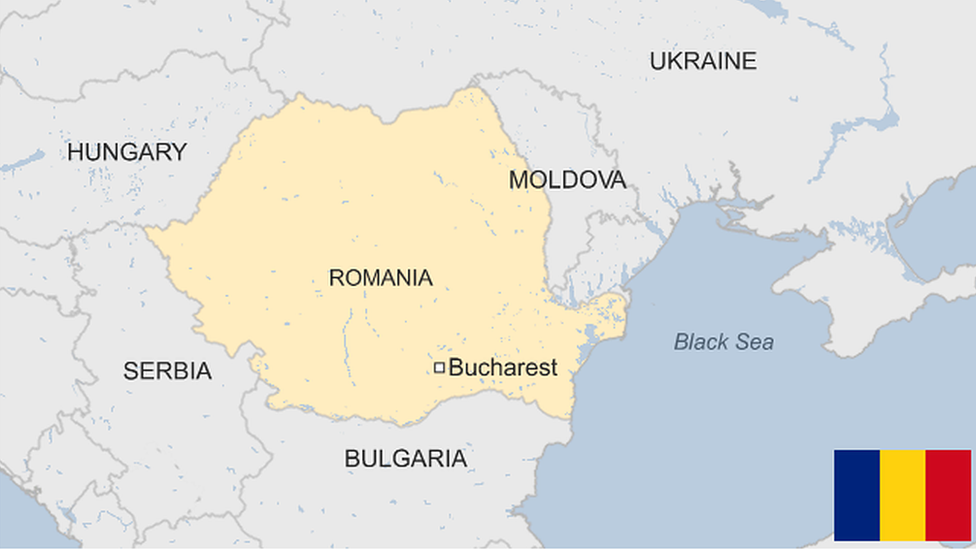
3.1 Mountainous Landscapes
One-third of Romania’s landscape is covered by majestic mountains, making it a paradise for nature lovers and outdoor enthusiasts. The Carpathian Mountains dominate the central part of the country, offering breathtaking views, challenging hiking trails, and winter sports opportunities. From the soaring peaks of the Fagaras Mountains to the picturesque valleys of the Apuseni Mountains, Romania’s mountainous regions provide a diverse range of experiences for adventurers and nature enthusiasts.
3.2 The Danube Delta and Black Sea Coastline
Romania’s coastline along the Black Sea is a haven for beach lovers and those seeking relaxation by the water. The Black Sea offers pristine sandy beaches, crystal-clear waters, and a vibrant seaside atmosphere. One of Romania’s natural treasures is the Danube Delta, a UNESCO-recognized biosphere reserve and the world’s third most biologically diverse area. The delta is a paradise for birdwatchers, wildlife enthusiasts, and those seeking tranquility amidst untouched natural beauty.
3.3 Climate
Romania has a temperate-continental climate with four distinct seasons. The climate is influenced by the country’s location in Central Europe, as well as its topography, which includes coastal areas, plains, and mountains.
General climate characteristics
- Average annual temperatures range from 8°C in the north to 11°C in the south.
- Summers are warm, with average temperatures of 22-24°C.
- Winters are cold, with average temperatures of -2 to 3°C.
- Rainfall is relatively abundant, with an average of 635 mm per year.
- There are significant regional differences in climate, with the mountains being cooler and wetter than the lowlands.
Seasonal climate
- Spring is mild, with average temperatures of 10-15°C. Rainfall is common, but there are also many sunny days.
- Summer is warm to hot, with average temperatures of 22-24°C. The hottest months are July and August, when temperatures can often exceed 30°C. Rainfall is less common in summer, but thunderstorms can occur.
- Autumn is cool and dry, with average temperatures of 15-20°C. The leaves on the trees change color, making it a beautiful time to visit Romania.
- Winter is cold, with average temperatures of -2 to 3°C. Snowfall is common in the mountains, and can also occur in the lowlands.
Regional climate differences
- Mountains: The Carpathian Mountains, which cover about one-third of Romania, have a cooler and wetter climate than the lowlands. Average temperatures are 2-3°C lower than in the lowlands, and rainfall is higher.
- Lowlands: The lowlands in southern and eastern Romania have the warmest and driest climate in the country. Average temperatures are 11-12°C, and rainfall is less than 400 mm per year.
- Black Sea coast: The Black Sea coast has a milder climate than the rest of the country, with average temperatures of 10-12°C. Rainfall is also higher on the coast, with an average of 600 mm per year.
Climate change
Climate change is having a significant impact on Romania. Average temperatures have increased by about 1°C since the pre-industrial era, and rainfall patterns have become more erratic. These changes are having a negative impact on agriculture, tourism, and human health.
4. Historical Significance and Political Developments
4.1 From Roman and Ottoman Rule to Independence
Romania’s history is deeply intertwined with the rise and fall of empires. The region was once part of the Roman Empire and later came under Ottoman rule. In the 19th century, Romanian principalities gained autonomy and eventually united to form the modern state of Romania. The country fought for its independence and won full sovereignty in 1878, marking a significant milestone in its history.
4.2 Communist Era and Post-Revolution Transition
After World War Two, Romania fell under Communist rule, led by Nicolae Ceausescu. The Communist regime brought about a period of repression and economic stagnation, but it was eventually overthrown in a popular uprising in 1989. Romania underwent a challenging transition period after the revolution, as it sought to rebuild its political and economic systems.
4.3 Romania’s Integration into NATO and the EU
In recent decades, Romania has made significant strides in its international relations. The country joined NATO in 2004, strengthening its security and defense cooperation with other member states. In 2007, Romania became a member of the European Union, marking a milestone in its European integration journey. These partnerships have opened up new opportunities for economic growth, cultural exchange, and cooperation on various regional and global issues.
5. Vibrant Arts and Architecture
5.1 Architectural Treasures
Romania boasts a wealth of architectural treasures that reflect its diverse history and cultural influences. From the impressive Gothic architecture of the Black Church in Brasov to the elegant neoclassical buildings in Bucharest’s historic center, Romania’s cities are a blend of different architectural styles. The country is also home to stunning castles and fortresses, including the legendary Bran Castle, commonly associated with the Dracula legend.
5.2 Flourishing Arts Scene
Romania has a thriving arts scene, with artists, musicians, and performers contributing to its cultural vibrancy. The country has produced world-renowned figures in various artistic disciplines, including composer Georges Enesco, playwright Eugène Ionesco, and Nobel laureate George E. Palade. Visitors can enjoy performances at prestigious venues such as the Romanian Athenaeum in Bucharest or attend festivals like the George Enescu Classical Music Festival, which showcases the country’s rich musical heritage.
6. Natural Beauty and Biodiversity
6.1 The Danube Delta: A UNESCO-Recognized Gem
One of Romania’s natural wonders is the Danube Delta, a unique ecosystem teeming with biodiversity. Designated as a UNESCO World Heritage site, the Danube Delta is home to over 300 species of birds and various rare plant species. Exploring the delta’s intricate network of waterways and marshes allows visitors to immerse themselves in the tranquility of nature and witness the delicate balance of life in this remarkable environment.
6.2 Diverse Landscapes and Wildlife
Beyond the Danube Delta, Romania offers diverse landscapes that cater to outdoor enthusiasts. From the rugged peaks of the Carpathian Mountains to the rolling hills of Transylvania and the picturesque valleys of Maramures, the country’s natural beauty is captivating. Wildlife enthusiasts can spot rare species such as brown bears, wolves, and lynx in Romania’s protected areas, contributing to the country’s reputation as a biodiversity hotspot.
7. Authentic Experiences in Rural Romania
7.1 Peasant Culture and Medieval Traditions
The Romanian countryside is a treasure trove of authentic experiences, where traditional peasant culture and medieval traditions are still alive. Rural communities have preserved their customs, crafts, and way of life, offering visitors a glimpse into the country’s rich heritage. Exploring villages in Maramures or Transylvania allows travelers to witness traditional crafts such as woodcarving, pottery, and weaving, and participate in local festivals and celebrations.
7.2 Visiting Painted Monasteries and Hilltop Citadels
Romania’s religious heritage is showcased in its stunning painted monasteries, particularly in the region of Bucovina. These monasteries, adorned with vibrant frescoes depicting biblical scenes, are a testament to Romania’s spiritual and artistic legacy. Additionally, hilltop citadels such as Sighisoara, with its well-preserved medieval architecture, offer a journey back in time, allowing visitors to immerse themselves in the country’s fascinating history.
7.3 Immersing in Centuries-Old Villages
One of the highlights of visiting rural Romania is the opportunity to stay in centuries-old villages that have retained their authentic charm. These villages, with their traditional wooden houses, picturesque landscapes, and warm hospitality, offer a unique glimpse into the country’s rural life. Visitors can engage in agricultural activities, try traditional dishes, and learn about local customs, creating unforgettable memories of their Romanian journey.
8. Outdoor Adventures in Romania
8.1 Hiking and Biking in Varied Terrains
Romania’s diverse landscapes provide ample opportunities for outdoor adventures, including hiking and biking. From challenging trails in the Carpathian Mountains to gentle paths in the rolling hills of Transylvania, there are options for hikers and bikers of all skill levels. Whether it’s conquering the peaks of the Retezat National Park or exploring the picturesque landscapes of the Apuseni Mountains, Romania offers a paradise for nature enthusiasts.
8.2 Exploring the Carpathian Mountains
The Carpathian Mountains are a playground for outdoor enthusiasts, offering a range of activities such as mountaineering, skiing, and wildlife spotting. The Fagaras Mountains, known as the “Transylvanian Alps,” boast the highest peak in Romania, Moldoveanu, which attracts climbers from around the world. During the winter months, ski resorts such as Poiana Brasov and Sinaia provide excellent slopes for skiing and snowboarding, making Romania a destination for winter sports enthusiasts.
9. Romania’s Main Cities and Tourist Attractions
9.1 Bucharest: The Capital City
As the capital city, Bucharest is a vibrant metropolis that blends history with modernity. Visitors can explore its architectural landmarks, including the grand Palace of the Parliament, the Romanian Athenaeum, and the charming Lipscani district with its historic buildings and lively cafes. The city also offers a diverse culinary scene, bustling nightlife, and a thriving arts and music scene.
9.2 Transylvania: Medieval Towns and Castles
Transylvania is a region steeped in history and folklore, famous for its medieval towns and castles. Visitors can wander through the cobblestone streets of Brasov, admire the Gothic architecture of the Black Church, and visit Bran Castle, often associated with the Dracula legend. Other notable towns in Transylvania include Sibiu, Cluj-Napoca, and Sighisoara, each offering its own unique charm and historical significance.
9.3 Danube Delta, Painted Monasteries, and More
In addition to Bucharest and Transylvania, Romania offers a wealth of other tourist attractions. The Danube Delta, with its vast wetlands and diverse wildlife, is a paradise for nature lovers. The region of Bucovina is famous for its Painted Monasteries, adorned with intricate frescoes. Outdoor enthusiasts can explore the breathtaking landscapes of the Apuseni Mountains or relax at the Black Sea resorts along Romania’s coastline.
10. Travel Tips and Practical Information
10.1 Entry Requirements and Transportation
Before traveling to Romania, it’s essential to check the entry requirements and ensure you have the necessary visas or permits. The country has well-connected international airports, with Bucharest being the main gateway. Domestic transportation options include trains, buses, and rental cars, providing convenient access to various regions and attractions within the country.
10.2 Weather and Best Times to Visit
Romania experiences a temperate climate with four distinct seasons. The best time to visit depends on your preferences and the activities you plan to engage in. Spring (April to June) and autumn (September to October) offer pleasant weather for outdoor activities and sightseeing. Summer (June to August) is ideal for beachgoers and those seeking outdoor adventures, while winter (December to February) attracts skiers and winter sports enthusiasts.
10.3 Accommodation and Local Cuisine
Romania offers a range of accommodation options to suit different budgets and preferences, from luxury hotels to cozy guesthouses and traditional farm stays. When it comes to food, Romanian cuisine is a delightful blend of influences from neighboring countries and its own unique culinary traditions. Don’t miss the opportunity to try traditional dishes such as sarmale (cabbage rolls), mici (grilled minced meat rolls), and cozonac (sweet bread with nuts and raisins).
11. Romania’s Economic Growth and Challenges
11.1 Robust Economic Performance
Romania’s economy has shown resilience and strong growth in recent years. In the first half of 2022, the country’s GDP grew by 5.8%, largely driven by robust private consumption and early signs of investment recovery. The tourism sector has also played a significant role in driving economic growth, attracting visitors with Romania’s natural beauty and cultural heritage.
11.2 Potential Impact of Ukraine Conflict
The ongoing conflict in Ukraine poses challenges and uncertainties for Romania’s economy. As a neighboring country, Romania is closely monitoring the situation and its potential impact on regional stability and the European economy. The outcome of the conflict will have implications for trade, energy security, and investment in the region, which could affect Romania’s economic outlook.
11.3 Focus on Reducing Fiscal Deficit and Poverty
While Romania has experienced economic growth, it still faces challenges such as a high fiscal deficit and poverty rates. Efforts are being made to address these issues and promote sustainable development. The government aims to reduce the fiscal deficit and implement measures to alleviate poverty, with a target of reducing the poverty rate to 11.7% in 2022.
12. Education
Education is a high priority in Romania, and the government is committed to providing quality education to all citizens. The education system is based on the Bologna Process, which means that it is aligned with the education systems of other European countries. This makes it easier for students to transfer between universities in different countries.
Compulsory education in Romania lasts for 13 years, from the last year of pre-school education to grade 12 of Upper Secondary Education. Kindergarten will gradually become compulsory by 2030.
Public education in Romania is free. Students can also attend private schools, but these are typically more expensive.
The Romanian education system is divided into three levels:
- Pre-primary education: This level includes early childhood education and kindergarten, and is for children aged 3 to 6.
- Primary and secondary education: This level includes primary school (grades 1-4), lower secondary school (grades 5-8), and upper secondary school (grades 9-12).
- Higher education: This level includes universities, institutes, study academies, schools of higher education, and other similar establishments.
Higher education in Romania is provided by both state-owned and private institutions.Most of its tertiary-level programs are comprised of three cycles: a three-year bachelor’s degree, followed by a two-year master’s degree, and a three-year doctoral degree.
The Romanian government provides a number of financial assistance programs to students, including need-based grants, merit-based grants, and high achievement grants.
The government also oversees the quality of education in Romania. It does this by setting national standards, developing curricula, and evaluating schools.
13. Government
Romania is a parliamentary republic. The head of state is the president, who is elected to a five-year term. The prime minister is the head of government and is appointed by the president. The government is responsible to the parliament, which is made up of two chambers: the Senate and the Chamber of Deputies.
The Romanian government is divided into several ministries, including the Ministry of Education and Research. This ministry is responsible for overseeing the education system and ensuring that it meets the needs of the country.
The Romanian government also plays a role in funding education. It allocates a certain amount of money to the education budget each year. This money is used to pay for teacher salaries, school construction, and other educational expenses.
Conclusion: Discover the Beauty of Romania
In conclusion, Romania is a country of diverse landscapes, rich history, and vibrant culture. From its mountainous regions to the Danube Delta and Black Sea coastline, Romania offers a wealth of natural beauty to explore. The country’s cultural heritage, reflected in its architecture, arts, and traditions, provides a unique and authentic travel experience. Whether you’re seeking outdoor adventures, immersing in rural life, or exploring historical landmarks, Romania has something to offer every traveler. Embark on a journey to Romania and discover the beauty that awaits in this captivating country.
Cities, towns and villages in Romania
Sinaia
Check Voyage info and Guide for Romania Here Check the weather in Romania Here Sinaia is one of Romania’s finest holiday resorts, deep into the Carpathian Mountains. In the late 19th century, King Charles I of Romania chose Sinaia as his summer…
Arad
Check Voyage info and Guide for Romania Here Check the weather in Romania Here Arad is the capital of Arad County in western Romania, situated in the lower Mureş River valley near the Hungarian border. Originally a Roman outpost called…
Sighisoara
Check Voyage info and Guide for Romania Here Check the weather in Romania Here Sighisoara (Sighișoara) is a municipality on the Târnava Mare River in Mureș County, central Romania. Located in the historic region of Transylvania, Sighișoara had a population…
Targu Mures
Check Voyage info and Guide for Romania Here Check the weather in Romania Here Târgu Mureș (Targu Mures) is the seat of Mureș County in the historical region of Transylvania, Romania. It is the 16th largest Romanian city, with 116,033…
Brasov
Check Voyage info and Guide for Romania Here Check the weather in Romania Here Nestled in the Carpathian Mountains, Brasov (Brașov) is a picturesque city that feels like it’s straight out of a fairytale. Its Gothic architecture, charming cafes, and…
Cluj-Napoca
Check Voyage info and Guide for Romania Here Check the weather in Romania Here Cluj-Napoca (pronounced [ˈkluʒ naˈpoka]) is the second-most populous city in Romania and the seat of Cluj County in the northwestern part of the country. Geographically, it…

